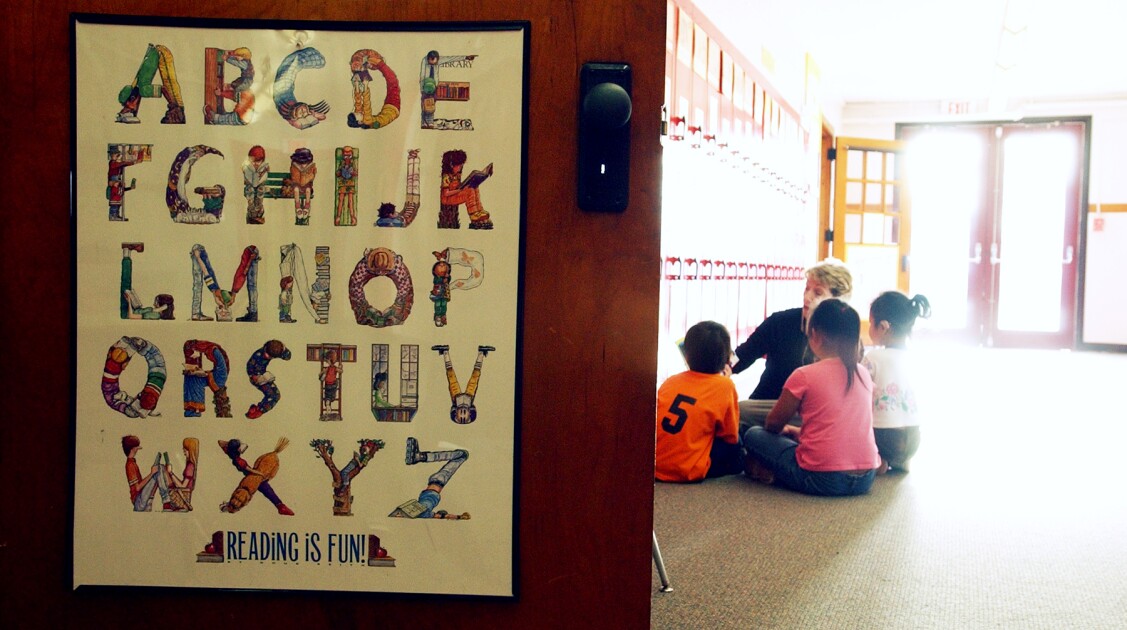After a rocky legislative battle, Illinois has become the 18th state to establish a tax-credit-scholarship program for students to use toward tuition at a nonpublic school.
When taxpayers contribute to the scholarship fund, they will get a tax credit of 75 percent of their donation—up to $1 million annually for an individual donor. The state caps the tax credit amount at $75 million, which means the scholarship fund could reach $100 million.
The money may be donated to a specific school or “subset” of schools, but not to a particular student. Scholarship recipients must have a total household income of less than 300 percent of the federal poverty level, meaning $73,800 for a family of four.
The five-year pilot program was tacked on to a larger bill that overhauls school funding in Illinois and funnels more state money into low-income districts—legislation that supporters have called historic. But the tax-credit-scholarship program drew sharp opposition from the state teachers’ unions, which called it an attack on public schools. Illinois House Democrats initially voted against the bill, before the measure passed with two votes to spare.
GOP Gov. Bruce Rauner signed the bill on Aug. 31.
‘A Bipartisan Approach’
Democratic and Republican lawmakers touted the legislation as a true compromise, saying that nobody liked 100 percent of it.
“This has been as much of a bipartisan approach to this type of program as you’re going to get,” said Josh Cunningham, an education program manager for the National Conference of State Legislatures. He said the measure addresses typical criticisms about issues such as accountability and lack of transparency.
For example, Illinois allows qualifying students to use the scholarships in any eligible private school in the state; most state programs have a list of approved schools, Cunningham said. And Illinois requires the private nonprofits that issue the scholarships to give priority to low-income students and students attending low-performing schools.
Also, Illinois requires that schools accepting scholarships administer the annual state test to the scholarship recipients. The state will later have independent researchers compare the outcomes of scholarship recipients to those of public school students across the state.
That requirement differs from most other states’ programs, said Jason Bedrick, the director of policy for the pro-school-choice group EdChoice. Typically, programs allow participating schools to choose from a menu of national norm-referenced tests, he said.
“If [parents] want something different, it doesn’t make sense to use the same type of test [as public schools],” he said, adding that he found this requirement problematic.
For the teachers’ unions, those accountability measures, as well as anti-discrimination language and a five-year sunset clause, are encouraging, said Dan Montgomery, the president of the Illinois Federation of Teachers.
But “it would be easier to swallow that pill if the state was doing its job fiscally elsewhere,” he said, pointing out that although the state funding bill includes an additional $350 million for schools, ideally, funding levels would be much higher.
“We are really so far away from the mark that it’s really hard for us to say, ‘Really? We’re going to essentially take $75 million out of the state’s revenue coffers to hand to wealthier people?’ ” Montgomery said. “It didn’t seem like good policy to us.”
Supporters of school choice, though, applauded the program. Adam Peshek, the director of education choice for the Foundation for Excellence in Education, said the program will benefit low-income and special-needs students who aren’t getting their needs met by public schools.
Critics, however, have said tax-credit scholarship programs in other states usually end up benefitting wealthier families.
The number of Illinois students who will benefit from the program could vary depending on the size of the individual scholarships, which will be drawn from a maximum fund of $100 million. Bedrick estimates that up to 20,000 students will benefit, or about 1 percent of the statewide student population.
Democratic lawmakers have estimated that the number will be closer to 6,000, according to news reports.
More to Come?
A recent nationally representative public-opinion poll from Education Next, a journal published by Stanford University’s Hoover Institution, found that tax-credit-scholarship programs command the highest level of support among all choice proposals, including charter schools.
Peshek said when state legislatures next reconvene, there will likely be additional tax-credit-scholarship legislation proposed.
“If you look at the number of tax-credit scholarships enacted, ... more than half of them have been created in the last six years,” he said. “There’s a growing interest in these programs. We’re getting at least one or two a year from states.”
And the passage in Illinois proves that states don’t need a “perfect political situation” to pass this sort of choice program, Peshek said. He pointed to places like Florida, where a tax-credit-scholarship program was initially a Republican initiative but has gained support from some Democratic legislators, who have voted on subsequent expansion measures.
“Ten years from now, people will look back and find it hard to believe that this wasn’t [considered] a win-win for everyone,” Peshek said.









